Erica Australis: [Care, Planting, Irrigation, Substrate and Pests]
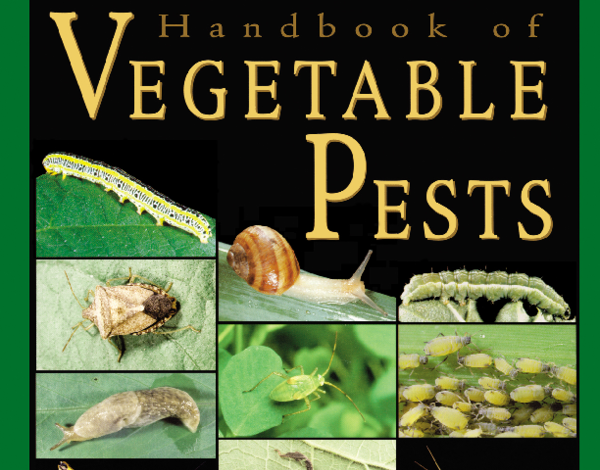
Important points when planting Erica Australis
 When? In spring it is convenient but autumn is ideal.
When? In spring it is convenient but autumn is ideal.- Where? It is grown in gardens and pots, with very good results in very well lit places. In hot climates, it must be kept in semi-shade.
- How do we prepare the land? Well-drained, light, acidic soils are its preference. Peat substrate retains moisture and drains excess.
- How do we sow? In seedbeds and by cuttings, it reproduces slowly.
- How do we pay? Natural fertilizers to the irrigation water at the end of flowering.
- When do they bloom? Between late winter to early spring, from January to May. Sometimes they bloom all year.
- Ideal temperature? It ranges between 18 to 23ºC. However, in rustic it supports intense cold of up to -10ºC. But you have to take care of it from frost and winter winds.
- How do we water? Sparingly, to prevent the substrate from becoming waterlogged.
- Diseases and pests? It is afflicted by gray rot and is attacked by mealybugs and spider mites, which must be controlled.
What is the Erica Australis?
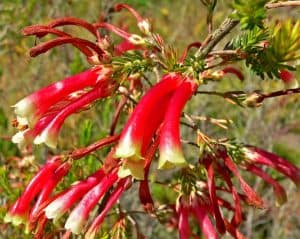 Erica australis, also known as blond heather, is a shrub belonging to the Ericaceae family.
Erica australis, also known as blond heather, is a shrub belonging to the Ericaceae family.
It grows throughout the northern, central and eastern regions of the Iberian Peninsula and North Africa.
It is characterized by a spectacular flowering that covers all the foliage, attracting a lot of bees.
It can reach a height of 1.5 meters and its branches can develop in the same way, with obtuse and linear shiny green leaves, with a diameter between 3.5 to 6 mm, with a rough underside that becomes smoother as the plant grows..
The deep pink flowers of the Erica australis are a true visual spectacle. They all grow looking to one side, forming clusters of tightly packed branches that end in 4 to 8 orderly forms with a calyx with 4 oval sepals, a tubular corolla and 4 ovoid lobes.
It has various medicinal uses in countries such as Morocco and Turkey, where its stems, leaves and flowers are used. It is a powerful laxative, diuretic, it is used as a urinary disinfectant and even to lose weight.
In other latitudes it is used to regulate blood pressure and kidney function problems.
The wood from its roots is used to make smoking pipes and great forging charcoal.
Where should we plant the Erica Australis?
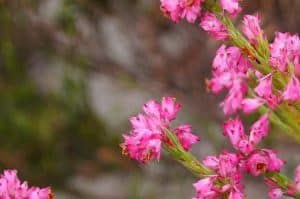 Thanks to its striking, practically permanent flowering, it is used as an ornamental plant in gardens, where massifs, rock gardens and even landscapes created on the ground by expert florists are raised.
Thanks to its striking, practically permanent flowering, it is used as an ornamental plant in gardens, where massifs, rock gardens and even landscapes created on the ground by expert florists are raised.
In large pots it also offers an intense purple bloom, where it can live for several years.
When to plant the Erica Australis?
Autumn is the best time to sow this shrub, but it can also be done in spring .
How do we prepare the land?
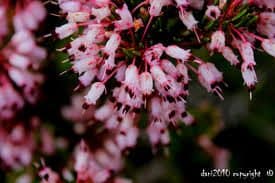 When it is removed from its natural space, it must be taken into account that it does not like limestone at all. It prefers loose, light and acidic soils.
When it is removed from its natural space, it must be taken into account that it does not like limestone at all. It prefers loose, light and acidic soils.
It is an undemanding thicket at this particular point of the terrain. In the wild, it can grow in poor, shallow soils with a high level of soluble aluminum in mountain ranges and summits.
It usually forms fairly thick layers of basal vines and lignotubers of about 50 centimeters, which implies a significant thickening of the upper root zone.
That is why it is considered a species of heather capable of living in acidic soils from the sandstones that come from the Strait of Gibraltar region, in southern Spain and northern Morocco.
In gardens, it works very well for the creation of landscaping on the ground, in flower beds and in compositions of two or three plants. But if we have clay soil we should grow the plant in a pot, where it also does very well as long as it has good drainage and light.
The pH must be acidic and between 4.5 and 5.5.
How to sow Erica Australis step by step?
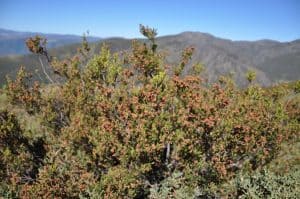 An Erica australis can be multiplied by seed and through grafting. But do not forget that it is a slow-growing plant, so you have to be patient.
An Erica australis can be multiplied by seed and through grafting. But do not forget that it is a slow-growing plant, so you have to be patient.
The seedlings, on the other hand, can be planted in their definitive habitat, after a year or two of life.
Let’s now see how these vital cultivation techniques are to multiply this wild shrub that adapts very well to gardens.
by seed
It is not the fastest reproduction formula, because germination can be greater than a month.
- The first thing is to prepare a plastic tray, with the following dimensions: 20 cm deep, to which you must place a thin layer of gravel, to cover about 10 mm.
- The substrate must contain the following components: two parts of soil for heather, one coniferous and one sandy. And a special potting mix with perlite and compost also works.
- Moisten the substrate, without saturating it with water. If it’s rainy, it will be much better.
- Add the seeds. Plant with the help of your fingertips, pressing them gently into the substrate, at a depth of 1 cm.
- Water the soil with warm water daily. The frequency will be twice a day in hot climates and less in cold climates, where you will only repeat the operation if the substrate is no longer moist.
- The seedbed must be kept in a semi-shaded place, ventilated without direct sun covering it, because then the water evaporates and dries up, losing moisture.
- The shoots will begin to appear after about a month, with success, but they will not be able to strengthen until two months later or a little longer, because it is necessary to wait for them to adapt to natural light.
- Only after 6 months to a year can you take the seedlings to their final habitat, in a pot or garden.
- If you plant them in the garden, you have to clean the entire land beforehand, removing weeds, residues, remains of other crops, taking care to moisten the soil and it is very advantageous to add a good fertilizer so that the seedlings adapt quickly.
- Each shoot will have a separation of between 20-30 cm from the nearest one.
- From now on, it will be wise to fertilize frequently, supported by a layer of pine bark, and peat moss.
by cuttings
Delivers results faster.
- Cut off the tops of shoots that you will need to harvest in the fall. Moisten the tip in a hormone rooter.
- Have a pot prepared with peat and sand in equal parts. The substrate must be moistened previously.
- The ambient temperature should range between 10 to 20ºC maximum.
- Plant about two cuttings for each pot, placed in a semi-shaded area. Sunlight cannot directly affect future shoots.
- When the seedlings have roots, they must be placed under the sun but gradually, so that they adapt. The air must be fresh.
- After the seedlings are strengthened, the final planting site can be sought.
- The substrate should never be allowed to become waterlogged as this will stop the plant’s growth program.
What care does the Erica Australis need?
Actually, the Erica australis is a species that does not require extreme or rigorous care. Its specimens must be kept under observation, pending the following variables: irrigation, fertilization and pruning of the shoots, so that it always remains strong, especially after the flowering cycle is closed.
Lightning

It is necessary that the plant receives good sunlight, but not direct sunlight for many hours. Nor is it necessary to keep it in dark and shady places, much less exposed to blizzards or gusts of wind, because they damage it.
The ideal is a half shade to full light. It requires about 6 hours a day of sun, because that helps flowers and leaves stay healthy.
Now, if you live in a very hot climate, you have to take it to partial shade so as not to exhaust it.
Temperature
They live in cool temperatures, but away from snowfall. In colder areas, it is convenient to cover the base of the plant with dry leaves and fir trees to give them protection with additional nutrients that will help them not suffer the rigors of the heavy winter.
It is intolerant, as we have already said, of
Substratum
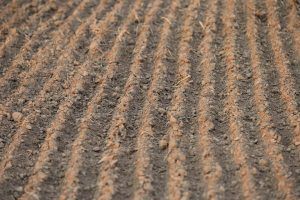 Enriching it with a cover of pine bark, peat and chips will give the soil nutrients and looseness.
Enriching it with a cover of pine bark, peat and chips will give the soil nutrients and looseness.
It does not get along well with clay soils. They should be rather sandy and light or loamy.
Irrigation
The soil must always be moist, so it is advisable to water with a dew technique daily, to obtain the best results.
In a pot, the technique of water in the saucer can be used, because it requires that the substrate always have humidity, about half an hour a day.
Pass
It is essential to apply natural fertilizers at planting time, shortly before flowering and after carrying out maintenance pruning.
It is best to incorporate it into the irrigation water.
If you can install a drip irrigation system it will be much better.
Pruning
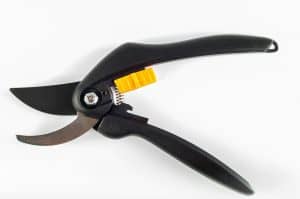 It is advisable to apply a selective pruning at the beginning of spring, to eliminate the very vigorous stems that are detected below the flower clusters that appear.
It is advisable to apply a selective pruning at the beginning of spring, to eliminate the very vigorous stems that are detected below the flower clusters that appear.
But above all you have to prune every year, at the end of the flowering cycle.
What pests and diseases does it have?
Gray rot is a disease that greatly afflicts this species of wild origin, very prone to fungal diseases, with key symptoms such as numerous leaves falling, wilted grayish flowers and death of young shoots.
To combat it, constant moisture levels must always be maintained in the substrate, but without excessive discharge of water into the soil.
When this disease is detected, it is necessary to apply an effective fungicide that is generally applied for about 10 continuous days.
Spider mites and mealybugs are other unwanted tenants. It is recommended that before planting in the garden, the land is previously disinfected, to exterminate spider eggs, a great preventive measure.
Cochineal, if it is very persistent, is combated with continuous spraying of neem oil or potassium soap, but if the situation worsens then it can be combated with the support of its two natural predators: Rodalis cardinalis and Cryptolaemus montrouzieri.
And nitrogen -rich substrates must be removed.


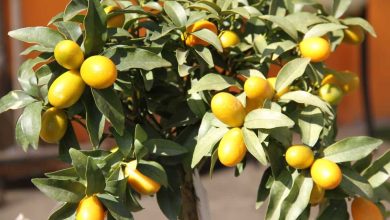
![Photo of Dandelion: [Care, Planting, Characteristics, Irrigation and Substrate]](https://www.complete-gardening.com/wp-content/uploads/2022/08/dandelion-care-planting-characteristics-irrigation-and-substrate-390x220.jpg)
![Photo of How to Plant Incense: The Guide You Need + [Images and Step by Step]](https://www.complete-gardening.com/wp-content/uploads/2022/08/how-to-plant-incense-the-guide-you-need-images-and-step-by-step-390x220.jpg)